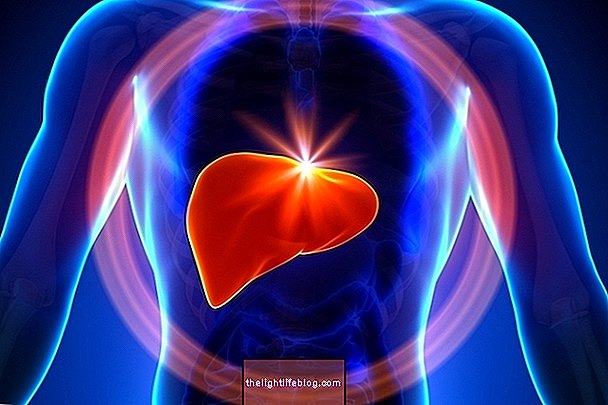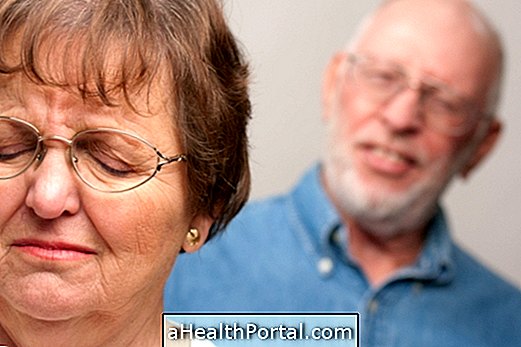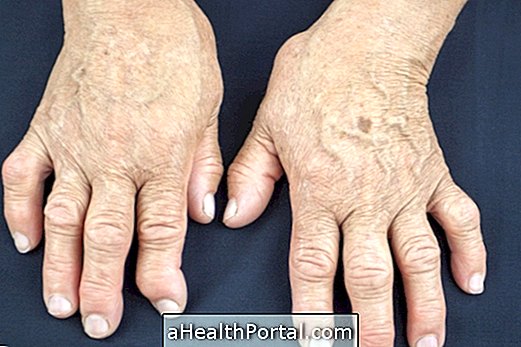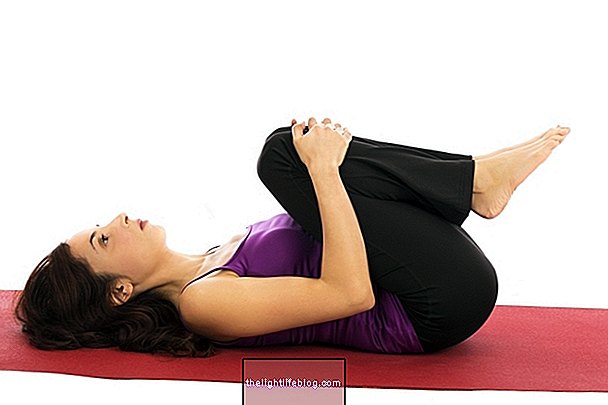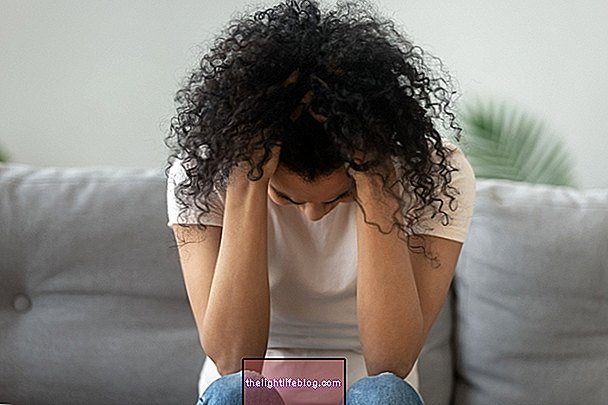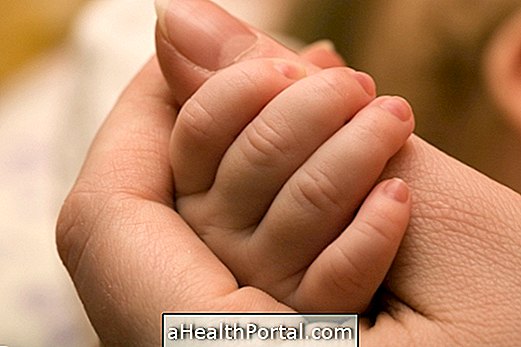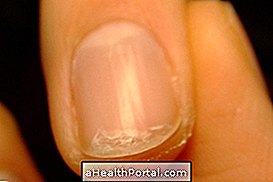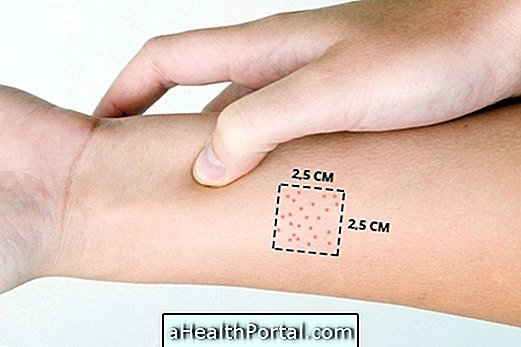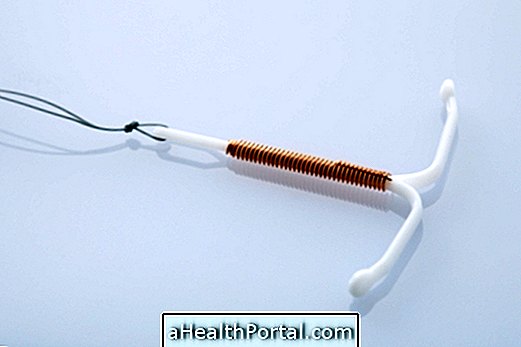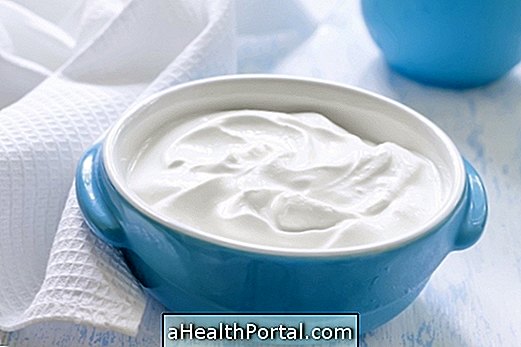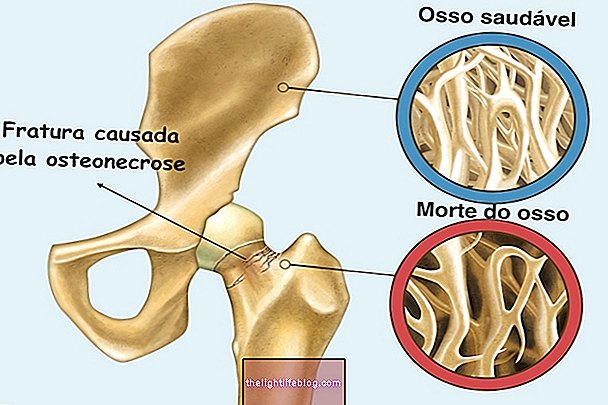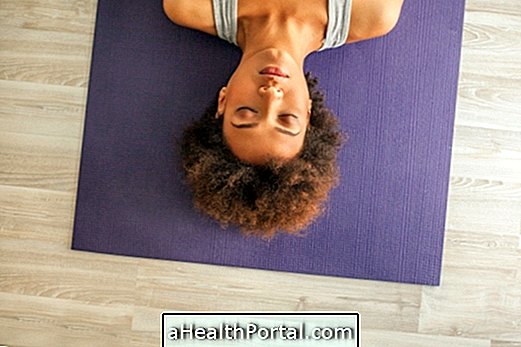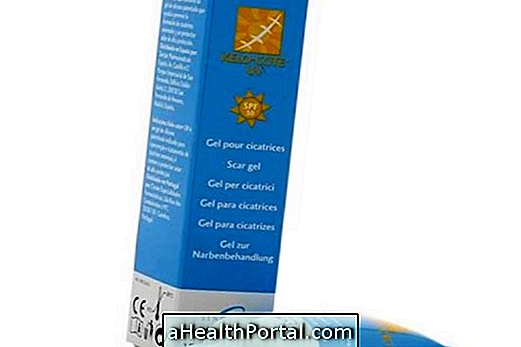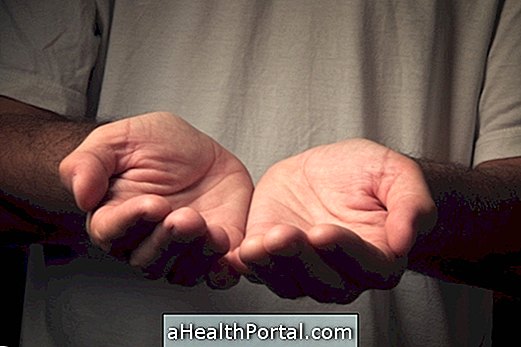The treatment for osteoporosis in the spine has as main objectives to delay bone mineral loss, decrease the risk of fractures, relieve pain and improve quality of life. For this, the treatment must be guided by a multidisciplinary team and is especially focused on the use of medications, adequate nutrition, changes in lifestyle and treatment with physiotherapy.
Osteoporosis is a silent disease characterized by loss of bone mass, making bones more fragile and at risk of fractures, being more common in older people and women in menopause. Know the symptoms of osteoporosis.
1. Exercises

The main form of treatment for osteoporosis is supplementation with vitamin D and calcium, however physiotherapy exercises also seem to play an important role in bone remineralization, in addition to helping to increase strength and improve quality of life.
Exercises should always be indicated and guided by the physiotherapist, but some options include:
- Exercise 1: In the position of 4 supports, with arms outstretched, push the back towards the ceiling, shrinking the belly inwards and letting the back slightly bend. Stay in this position for about 20 to 30 seconds and repeat 3 times. This exercise helps to stretch the back, relieving pain;
- Exercise 2: In the standing position, lean against a wall with your feet shoulder-width apart and slightly forward, buttocks, palms, back and shoulders against the wall. Slide up and down, bending your knees halfway, as if you are sitting, keeping your back straight. Repeat 10 times, 2-3 times a week. This exercise helps to strengthen the back and improve posture;
- Exercise 3: Sitting on a pilates ball or chair, without leaning on the back, try to join the shoulder blades together, which can be done by placing your hands on the bottom of your back or holding and pulling an elastic in front of your body. Hold the position for 15 to 20 seconds and relax. Do this exercise 3 times a week. This exercise stretches the upper back and shoulders, improving posture.
Due to the biomechanical strength caused by the muscles in the bones, these types of exercises are able to increase bone mineral density.
In addition, regular resistance physical exercise is also a good solution to reduce the risk of falls and fractures, in addition to promoting a modest increase in bone density. Some examples include walking, running or dancing, for example. See other exercises for osteoporosis.
2. Use of medicines

Although several nutrients are involved in the formation and maintenance of bone mass, calcium and vitamin D are the most important. Therefore, supplementation of calcium and vitamin D is the standard treatment in preventing fractures, and the minimum daily intake should be guaranteed in all cases of osteoporosis and according to the guidance of the orthopedist or nutritionist.
In addition, other medications that may be indicated by the doctor include:
- Oral bisphosphonates: are the drugs of first choice in the treatment of osteoporosis;
- Sodium alendronate: helps prevent fractures, with evidence of its effectiveness in reducing the risk of vertebral, non-vertebral and hip fractures;
- Risedronate sodium: prevents fractures both in postmenopausal women and in men with established osteoporosis, with evidence of its effectiveness in secondary prevention of vertebral, non-vertebral and hip fractures.
After completing the proposed treatment time, patients should have regular follow-up, with assessments including anamnesis and physical examination every 6 to 12 months.
3. Lifestyle changes

In addition to being very important to exercise, the adoption of a healthy lifestyle is also very important for the treatment of osteoporosis. Thus, it is advisable to maintain a balanced diet and richer in foods with calcium and vitamin D, such as egg, almonds, cabbage, broccoli or salmon, for example
In addition, abandoning activities that may have a negative effect on health, such as smoking or drinking alcohol in excess, is also of utmost importance.
See in the video below what to consume to have stronger bones and, thus, fight osteoporosis:

Was this information helpful?
Yes No
Your opinion is important! Write here how we can improve our text:
Any questions? Click here to be answered.
Email in which you want to receive a reply:
Check the confirmation email we sent you.
Your name:
Reason for visit:
--- Choose your reason --- DiseaseLive betterHelp another personGain knowledge
Are you a health professional?
NoMedicalPharmaceuticalsNurseNutritionistBiomedicalPhysiotherapistBeauticianOther
